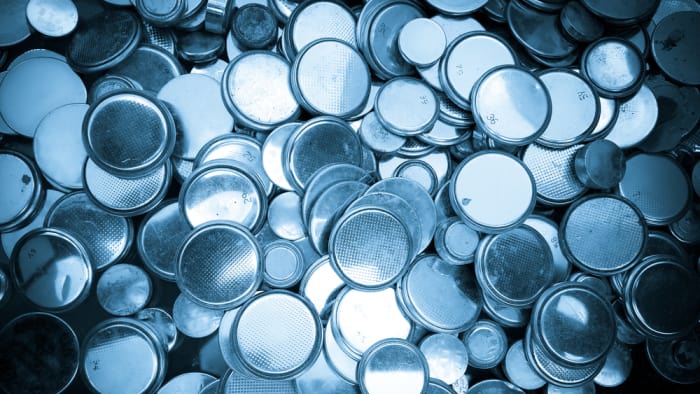Properties of lithium, and the reactions of water and certain acids with lithium
How lithium reacts with different compounds

In 1817, a metal of the first group of the second period in the periodic table was discovered – lithium. The discovery was made by the Swedish scientist Johann August Arfwedson, who was investigating various minerals. The element was found in petalite, spodumene and lepidolite. Shortly afterwards, in 1818, metallic lithium was obtained by Humphrey Davy.
Lithium and its compounds are essential chemical elements in the life of human beings, and are used in many spheres of industry:
- in the manufacture of chemical sources of electrical energy;
- in the manufacture of fireworks: lithium nitrate turns flames red;

-
lithium is often used as a metal for alloys, making it possible to create light but durable solders;
-
lithium is also used in radio electronics and nuclear energy;
-
lithium salts are widely used in medicine. Lithium is vital for human health in small amounts, and takes part in the functioning of vital organs such as the heart, liver and lungs.
This is far from all the spheres where this metal and its compounds are used.
Physical properties of lithium
Lithium is an alkaline metal of a silvery-white color. It is soft and easily molded, and a cube of metallic lithium can be cut with a knife.
It is interesting that lithium is the only metal from this group which boils and melts at rather high temperatures: 1340 and 180.54 degrees Celsius respectively. But it is also interesting that compared with its “alkaline neighbors”, lithium has the lowest density – half the density of water. This property means that lithium does not even sink in kerosene.

Chemical properties
Lithium is classified in the alkaline group of metals, but it behaves stably in air and practically does not interact with oxygen, not even dry oxygen. Owing to the unusual properties of this metal, unlike other alkaline metals it is not stored in kerosene, especially as its low density means that it will float. Lithium should be stored in paraffin, petroleum ether, gasoline or mineral oil in a hermetic metal container.
In humid air, lithium may enter into slow reactions with nitrogen and other gases contained in air. Li₃N, LiOH и Li₂CO₃ — lithium nitride, hydroxide and carbonate — form.
Other chemical properties of lithium
When heated with oxygen, lithium burns with the formation of lithium oxide Li₂O.
Lithium and its salts turn flames a carmine red color.

This qualitative reaction for lithium was established by Leopold Gmelin in 1818.
At temperatures from 100 to 300 degrees Celsius, a dense oxide film forms on the surface of lithium, which protects the metal from further oxidation. It easily reacts with halogens, with the exception of iodine.
Lithium reacts calmly with water: the reaction is not accompanied by combustion or an explosion.
Lithium interacts with alcohols, forming alcoholates
When heated it reacts with sulfur, silicon, iodine and hydrogen, forming lithium sulfide, silicide, iodide and hydride respectively.
Reaction of lithium with water
The reaction takes place quite calmly. Like all alkaline metals, if lithium is placed in water, an alkali begins to form, and hydrogen is released, and the metal floats on the surface and literally melts before your eyes. The reaction of the dissolution of lithium in water is accompanied by a characteristic hissing.
The alkali that forms in the solution is called lithium hydroxide LiOH, which consists of white crystals, and is quite a strong base:
2Li + 2H₂O → 2LiOH + H₂↑
Reaction of lithium and sulfuric acid
If a small piece of lithium is added to concentrated sulfuric acid, lithium sulfate, hydrogen sulfide and water form.
Warning! Don’t try to repeat this experiment without a professional supervision! Here you’ll find safe experiments for doing at home.
This reaction is dangerous, especially at home, as lithium immediately burns with a bright flame:
8Li + 5H₂SO₄ → 4Li₂SO₄ + Н₂S + 4H₂O
With diluted sulfuric acid, lithium interacts with the formation of lithium sulfate and hydrogen.
2Li + H₂SO₄ → Li₂SO₄ + Н₂

Reaction of lithium with nitric acid
If a piece of lithium is placed in diluted nitric acid, lithium nitrate, ammonium nitrate and water form:
8Li + 10HNO₃ → 8LiNO₃ + NH₄NO₃ + 3H₂O
With concentrated nitric acid, lithium reacts differently, and the products of reaction will be lithium nitrate, water and nitric dioxide.
Li + 2HNO₃ → LiNO₃ +NO₂ + H₂O
Reaction with hydrochloric acid
With hydrochloric acid, lithium reacts like other metals, forming lithium chloride and hydrogen.
2Li + 2HCl = 2LiCl + H₂
We should note that the reaction of lithium and other alkaline metals with acids takes place in a complex manner, as the acid solutions contain water, with which lithium actively interacts with the formation of lithium hydroxide, which enters into a reaction with acids with the formation of salt and water.